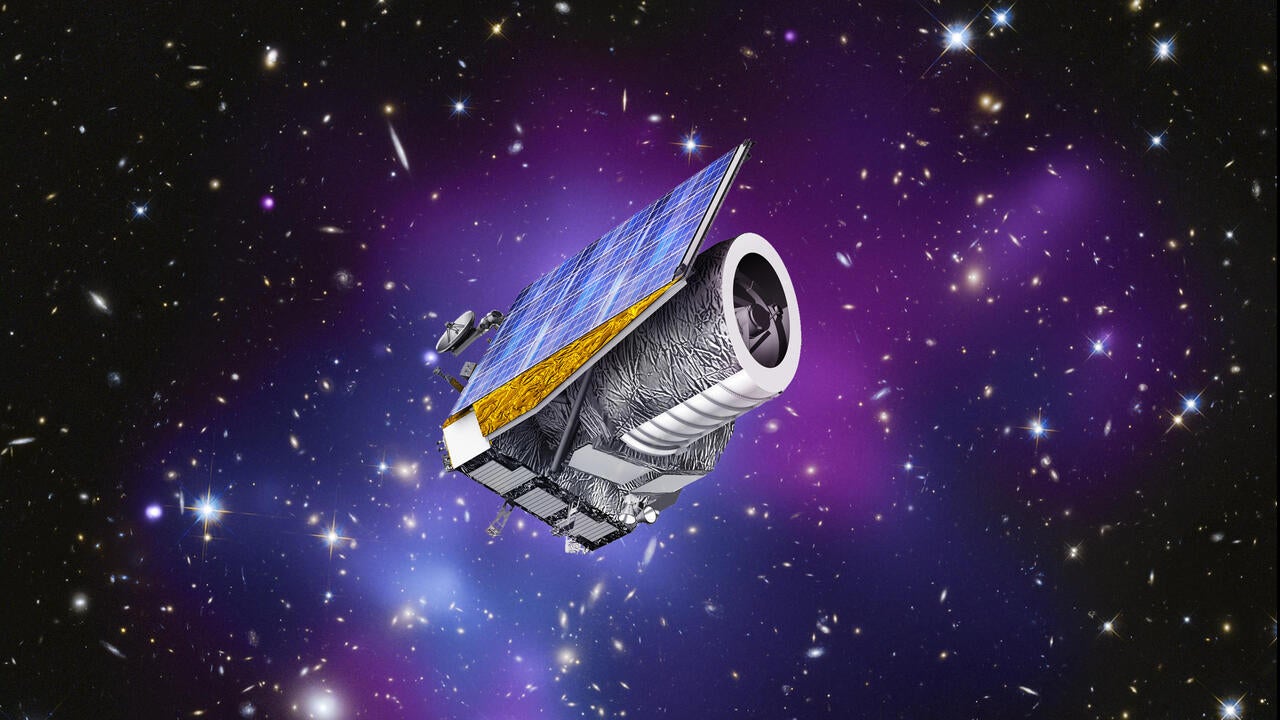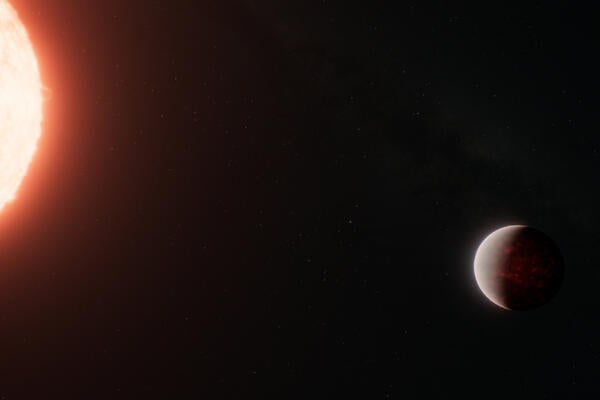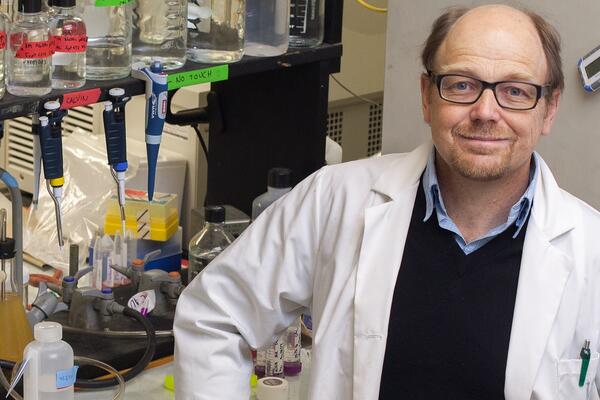
Canadian scientists celebrate launch of Euclid satellite
Mission will explore the evolution of the dark Universe

Mission will explore the evolution of the dark Universe
By Media RelationsToday, the European Space Agency launched its Euclid satellite from Cape Canaveral, Florida. Twelve years in the making, the Euclid mission will construct a 3D map of the Universe by observing billions of galaxies, across more than a third of the sky.
The goals: to understand the physical laws of the Universe and to explain how the Universe originated and what it is made of.
The satellite will spend more than 6 years in space to accomplish the mission and see more than 2,000 scientists involved in some part of analyzing the data it sends back to Earth. This group includes Canadians from many leading astronomy research groups across the country.
Canadian organizations involved in the Euclid mission include the University of Waterloo, the University of British Columbia, the National Research Council of Canada (NRC), the Canada France Hawaii Telescope, the Canadian Space Agency and many others.
“Euclid will provide a huge step forward in our understanding of the components of our universe that do not interact with light. Using observations that are not limited by our atmosphere, Euclid will examine the pattern of galaxies in the Universe and the observed shapes of those galaxies to study the exact way that the Universe is expanding, and what structures are growing within it.” said University of Waterloo Professor Will Percival, one of four scientists coordinating the primary science on the mission. “It’s been a long journey since we sketched out the initial requirements for the mission, and we’ve got a long way still to go to analyse the data, but it’s incredibly exciting to have reached this point.”
Each country that participates in a large, complex mission like Euclid will traditionally offer some sort of contribution to the preparations. For example, hardware for the satellite itself, expertise in the form of specialized engineers or, as in Canada’s case, data.
Canada’s contribution to Euclid came from the Canada France Hawaii Telescope (CFHT), located atop the summit of Mauna Kea, a 4,200-metre, dormant volcano located on the island of Hawaii. CFHT contributed data related to 1 of the 2 principal scientific groups within the Euclid mission – those who are studying dark matter using a process called gravitational lensing.
“Canada has provided data from ground-based telescopes that is critical to the success of the Euclid mission. Canadians were at the forefront of a collaboration using Hawaii-based telescopes to cover the northern sky in many filters, including data from CFHT as well as from the Subaru telescope through the Waterloo-Hawaii-IfA G-band Survey (WHIGS),” said Mike Hudson of the University of Waterloo, “In return, 25 Canadians joined the Euclid Consortium: a win-win for science.”
Euclid’s goal is to determine the properties of dark energy and dark matter on universal scales.
It will take images in optical and near-infrared light; these images will eventually cover more than 1/3 of the extragalactic sky outside the Milky Way and depict billions of cosmic targets out to a distance where light has taken up to 10 billion years to reach us.
Euclid’s image quality will be at least 4 times sharper than that achieved by ground-based sky surveys.
In addition, Euclid will perform near-infrared spectroscopy of hundreds of millions of galaxies and stars over the same sky. This will allow scientists to investigate the chemical and kinematical properties of many targets in detail.
Euclid will build up a large archive of unique data, unprecedented by volume for a space-based mission, enabling research over all disciplines in astronomy.
The Canadian Astronomy Data Centre (CADC), operated out of the NRC’s Herzberg Astronomy and Astrophysics Research Centre in Victoria, British Columbia, will archive the data from Euclid and make it accessible to astronomers for data-intensive astrophysical research and publications. The CADC will also provide colour information, since Euclid will be producing images in, essentially, black and white. Determining the colour of a galaxy reveals how far away it is, which will turn a 2D map of the dark matter into a 3D map.
"The Euclid images will be beautiful to look at, above and beyond the considerable scientific value of the data. I'm looking forward to seeing them," said Stephen Gwyn, Science Data Specialist at the Canadian Astronomy Data Centre.
"Euclid was built to understand the dark Universe, but to do that it gathers a huge amount of information about the bright Universe! That means that even if we make a list of what we expect to learn, there are going to be additional discoveries that weren't even thought about. To me, that's the most exciting thing about Euclid,” said Professor Douglas Scott from the University of British Columbia.
The first images from the Euclid mission are expected in approximately 2 months.

Read more
Here are the people and events behind some of this year’s most compelling Waterloo stories

Read more
Discovery of a thick atmosphere on a lava world reshapes our understanding of rocky exoplanets

Dr. Brian Dixon, professor of biology at the University of Waterloo says there is a link between cold weather and getting sick. (University of Waterloo)
Read more
Waterloo researcher shares why we get sick when the mercury dips
The University of Waterloo acknowledges that much of our work takes place on the traditional territory of the Neutral, Anishinaabeg, and Haudenosaunee peoples. Our main campus is situated on the Haldimand Tract, the land granted to the Six Nations that includes six miles on each side of the Grand River. Our active work toward reconciliation takes place across our campuses through research, learning, teaching, and community building, and is co-ordinated within the Office of Indigenous Relations.